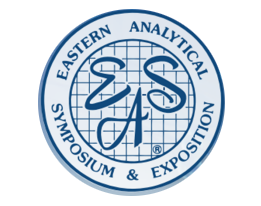MONDAY: KEYNOTE LECTURE
Exploring Mars with Curiosity and Perseverance
Dr. Roger Wiens, Los Alamos National Laboratory
NASA is currently operating two 1-ton rovers on the red planet: Curiosity and Perseverance. Curiosity is a mobile laboratory equipped with a remote LIBS instrument (ChemCam), x-ray fluorescence (APXS), x-ray diffraction (CheMin), and an organic lab with GCMS (SAM). Perseverance’s technology includes two fine-scale techniques on the arm: microbeam XRF (PIXL) and micro-Raman/fluorescence (SHERLOC), and remote sensing consisting of stand-off Raman, LIBS, infrared spectrocopy, and imaging (SuperCam). It also has a weather station, radar, an O2 converter, and a drone. Percy’s main goal is to collect samples to be returned to Earth on the next mission. Both rovers have revolutionized our understanding of Mars as a previously habitable planet complete with long-chain organic molecules. Did it once harbor microbial life? We are still learning! I had the privilege of developing ChemCam as the first LIBS instrument for space. My teams operated it on Mars for the last eight years while also developing the more advanced SuperCam as its successor. I will highlight the rovers’ instruments, their discoveries, and our adventures along the way.
TUESDAY BREAKFAST LECTURES:
Identification and Characterization of Microplastics and Nanoplastics Using Raman Spectroscopy,
Bridget O’Donnell, HORIBA Scientific
The amount of plastic pollution has increased exponentially since the mid-20th century due to the large increase in commercial production of plastics and their long lifetimes in the environment. Microplastics, which are defined as plastics less than 5 mm in size, have been demonstrated to have adverse effects on marine environments and potentially human health as well. To that end, legislation has been enacted on a global scale to increase our understanding, and to address the problem, of microplastics. There are a number of different analytical methods that can be used to characterize and identify microplastics. Raman spectroscopy has been demonstrated as a powerful technique for complete characterization of microplastics including polymer, additive, and pigment/dye identification. In this presentation, the microplastic characterization process will be discussed including sample collection, preparation and presentation, detection, and identification. Different sampling methods will be highlighted based on the size of analyzed microplastics including touch probe benchtop Raman systems, confocal Raman microscopes, and co-localized AFM-Raman microscopes. Optimization of experimental parameters, data processing, and analysis methodology will also be addressed. Finally, high throughput automated measurements and sub-sampling schemes will also be discussed.
The Unknown Toxicity of Microplastics
Phoebe Stapleton, Environmental and Occupational Health Sciences Institute, Rutgers University
The production of synthetic polymers over the last half century has been astronomical, with plastic products integrated into our daily lives. Unfortunately, it is the disuse and disposal of these items that may affect us the greatest. Plastic micro- and nanosized particles, likely from bulk degradation, have been identified in urban and rural areas, air pollution and water sources, and most recently in consumable products. As such, humans may be exposed to micro- and nanosized plastic particles through inhalation, ingestion, and dermal routes of exposure. These plastics particles have been shown to translocate from the primary site of exposure, depositing and accumulating in systemic organs. This bioaccumulation leads to secondary effects impacting cellular, neurological, and reproductive functions. Particle physicochemical properties can greatly affect particle uptake and cellular toxicity. Furthermore, questions pertaining to particle size, real-world indoor and outdoor concentrations, surface chemistry associated with chemical adsorption or plasticizing chemicals added in polymer development, and sustained tissue bioaccumulation persist. This presentation will focus on the routes of human exposure to micro- and nanoplastic particles, review the toxicological outcomes and concerns currently reported, and provide consideration for future assessments. This work was supported by the National Institute of Environmental Health Sciences (R01-ES031285) and Rutgers Center for Environmental Exposures and Disease (P30-ES005022).
WEDNESDAY POWERHOUSE PLENARY SESSION:
An Embarrassment of Riches: Developing Potency Assays for a Diverse Biologics Portfolio
Scott Umlauf, AstraZeneca
While the diversity of product formats in the portfolios of modern Biotechnology and Pharmaceutical Companies is a boon for patients and sales, it can present challenges for Bioassay Departments that support clinical development and commercial implementation. Product candidates in current biologics pipelines include: mAbs, fusion proteins, viral vectors, nucleic acids, and cell therapies. While the principles and regulatory requirements of developing, validating and transferring MOA-reflective assays are substantially the same for different product modalities, unique aspects of the product types can require broad skill sets and knowledge as well as different types of equipment, including appropriate EH&S controls. A survey of common, and not so common, product formats, reveals opportunities for both adaptable “platform” approaches as well as control system strategies that are tailored to specific product categories. In addition to the challenges of a broad portfolio, case studies show advantages and disadvantages of different method types with regard to CQA coverage, complexity, robustness, regulatory acceptance and “QC friendliness”.
Use of Novel and Platform Analytical Technologies for Rapid COVID-19 Vaccine Development
David Cirelli, Pfizer
Characterization of mRNA Based Vaccines
Huijuan Li, Moderna
